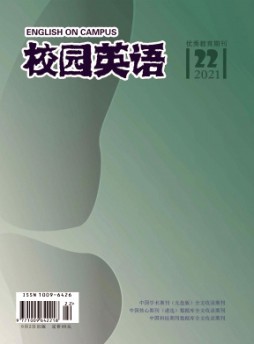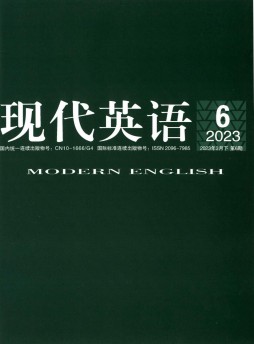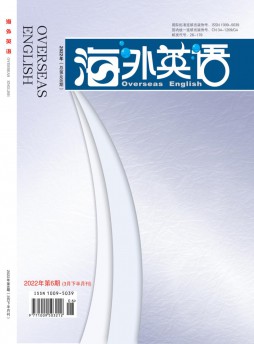英語詞匯測試范文
前言:我們精心挑選了數篇優質英語詞匯測試文章,供您閱讀參考。期待這些文章能為您帶來啟發,助您在寫作的道路上更上一層樓。

第1篇
【關鍵詞】英語;課改;詞匯;記憶;測試
一、前言
新課程改革對初中英語詞匯量的要求正在進一步提升,新的教材內容中生詞率亦在增加,單詞重復率顯著降低。新課程改革標準要求初中生必須至少掌握超過1500個新單詞,且能夠學會靈活使用約300個常規詞組及習慣用語。作為一門語言學科,詞匯是所有教學內容的構建基礎,詞匯之于英語教學,好比地基之于建筑,地基是保障建筑穩定的關鍵,同樣詞匯也是學習英語知識的基礎。任何思想交流的過程均是通過將不同的詞匯組合成句子,進而實現人類的交流活動。詞匯是構成語言的基礎,是任何詞組、句子、段落的最為基本、細小的單位。對于英語教學而言,學生對詞匯的掌握與運用程度是反映教學效果的重要指標。因此,在新課程改革的背景下,要提高初中英語詞匯教學的有效性,提升課堂教學的效率,廣大英語教師需依照詞匯教學的要求,設計多元化的詞匯教學活動,教會學生更多詞匯記憶的方法,以提升其語言運用的綜合能力。
二、強化詞匯記憶的教學策略
在初中英語教學過程中,詞匯是決定學生英語水平的關鍵,它對學生的整體英語水平有著至關重要的影響。因此,為提升英語教學效率,在課堂教學中老師需要向學生傳授更多的、有效的詞匯記憶方法,并結合積極的教學策略,以提升學生單詞記憶的水平。
(一)構詞法
任何語言的構成均會遵循一定的構詞規律,英語同樣如此,在英語中很大一部分單詞的構成均有其自身的構詞原則,學生若具備一定的單詞基礎,掌握基本的構詞規律,便能夠根據詞根、詞性準確猜測出單詞的含義,并通過聯想記憶,深化對單詞的理解,提升詞匯記憶的有效性。以farm 為例,加上后綴-er便可表示a person who lives in the farm,即farmer,農場主、農民、承包人,諸如此類的單詞還包括許多,例如:sing-singer,village-villager等,加上簡單后綴-er,放在動詞之后便表示從事該項工作的“人”及與該事情相關的“工具”。另外,還包括一些否定前綴的構詞規律等,例如:happy-unhappy,在原始單詞之前加上否定前綴-un,便可表示相反的含義。在詞匯教學中,老師需要引導學生總結單詞的構詞規律,并根據基礎單詞記憶與之相關的其他單詞,通過關聯記憶、規律把握,提升詞匯教學的效率,使學生奠定良好的詞匯基礎。
(二)拼讀規則記憶
英語單詞不僅有其構詞的規律,同樣在其拼讀方面亦遵循著一定的規則,學生在學習完各音節、音素的發音后,便可歸納出一定的拼讀規則。英語字組可分為元字組與輔字組,元字組主要由元音字母及字組構成,輔字組與其類似,是由輔音字母與字組組成。在英語學習的初始階段,由于學生所掌握的詞匯量相對而言比較少,對構成單詞的各個字母的發音尚不明確,此時老師便需引導學生記憶常規的字組,以增加其對發音規則的了解。在學生積累一定的詞匯基礎后,老師便可指導學生結合讀音與拼寫來對單詞做一個較為整體的記憶掌握,根據單詞的拼寫判斷其讀音,并通過讀音便可聯想單詞的字母構成,進而做到對單詞整體的把握,深化對單詞的記憶。
(三)將詞匯放置于語境中記憶
在英語中,較大一部分單詞的含義并不是單一、獨立的,在不同的語境中,相同的單詞亦會有不同的含義,因此,為增加學生對詞匯的理解,提升詞匯教學的有效性,老師還需將詞匯放置于具體的語境中,引導學生進行理解記憶。此種詞匯記憶方法不僅能夠深化對學生理解能力的培養,同樣能夠全面調動學生的思維能力。以number為例,作為動詞,它有“給……標號碼”的意思,而作為名詞,則主要表達數字、號碼的含義。此時在教學過程中,老師有必要為學生創設詞匯記憶的情境,列舉不同的例句,讓學生在句子中把握詞匯的含義,進行理解記憶。在“lily is numbering the pictures”一句中,“number”便作為動詞。因此,老師在教學過程中,需要引導學生通過練習教材案例,聯系整個句子,去猜測單詞的
含義,去深化自身對詞義的理解能力。
三、詞匯測試分析
在英語教學中,詞匯測試的主要目的便是用于鑒別學生對詞匯的掌握水平。它同樣也是英語教學的關鍵構成要素。老師能夠通過詞匯測試所反饋的結果,制定后期針對性的教學策略,進而提高英語教學的有效性。
整合近幾年來中考詞匯考察的習題特點設計,詞匯測試的重點均放置于一些重點名詞、動詞、形容詞等所衍生、構成的固定詞組上,主要通過轉變單詞詞性,將其置于不同的語境中,通過考察學生對句子及語篇的理解,根據所提示的單詞,寫出對應的考察單詞,以保障語段及句子的連貫性。此類命題多考察學生對句子的理解、分析能力,對詞匯知識的運用能力,對單詞的辨析能力及詞性、語態的把握等。因此,在英語教學設計時,老師需要結合考察目標,整合不同類型的詞匯考查題,將其引入課堂中,測試學生的詞匯掌握水平,強化對學生理解能力的鍛煉,主要可采取完形填空、綜合填空、短文填空等測試形式,在課程結束前10分鐘,對學生進行簡單的詞匯記憶測試,并在下一堂課前根據測試所反饋的結果,調整教學策略,細化教學重點內容,進而提升英語詞匯教學的有效性,全面提升學生的綜合素質。
四、結語
綜上所述,在新課程改革的背景下,要提升英語課堂教學的有效性,深化學生對詞匯的理解記憶、聯想記憶,為其英語學習奠定良好的單詞基礎,老師在教學過程中需要注重講授更多單詞記憶的有效方法,引導學生通過構詞法、拼讀記憶等規則來深化對詞匯的把握與記憶,同時還需根據新課程教學的目標,并結合中考考察的重要內容,為學生創設更多的詞匯學習情境,深化對其理解能力的培養。
【參考文獻】
[1]呼新民.初中新課程英語詞匯記憶及其測試的研究[j].科學導報,2013(09).
第2篇
關鍵詞:詞匯測試 效度 信度 選擇題
Abstract: Vocabulary test, as an important part of English language tests, should be valid and reliable. A valid vocabulary test is one which tests what it is supposed to test, while a reliable vocabulary test is one which will always give the same result under the same condition. At the first place, vocabulary test should be therefore designed with considering validity and reliability.
Keywords: testing vocabulary, validity, reliability, multiple-choice
Vocabulary test is considered as an important part of language tests, because there is a sense in which learning a foreign language is basically a matter of learning the vocabulary of that language. It is pointed out that the purpose of vocabulary tests is usually to supply information, and the information should be accurate. So vocabulary tests should be valid and reliable, and should be designed with considering validity and reliability.
Test validity in designing vocabulary tests
A valid vocabulary test is one which tests what it is supposed to test. There are two points should be concerned here: one is the selection of lexical items; the other is the ways of constructing items for testing vocabulary.
The writer of a vocabulary test first determines the degree to which he/she wishes to concentrate on testing the student’s active or passive vocabulary, and decides whether the lexical items in the test should be taken from spoken or the written language. Lexical items can be selected from:
----the syllabus (including a word frequency list if available);
----the students’ textbook (provided the items approximate to those used in natural speech situations);
----the students’ reading material (e.g. simplified readers, literary texts); and
----lexical errors taken from students’ free-written work (or from students’ incorrect answers in a cloze test).
Then the writer of a vocabulary test should select out the typical words from the lexical items. What is called “typical” is that it can test the extent of a student’s vocabulary by some typical words. Suppose there are 30 words selected, which can be divided into several classes. And it is possible measure the extent of a student’s vocabulary according to the class that the typical words recognized or produced belong to. That’s the test validity on selecting lexical items.
There are kinds of ways of constructing items to test vocabulary. Generally speaking, the items are designed on the basis of two points as follow. One is to test the vocabulary validly; the other is to change ways of constructing items according to the purpose of the tests.
Let us take, for example, a test which is designed to find out whether students understand the meanings of certain words in a written context. The rubric for the test may say: ‘ Give the meanings of the following words taken from the passage that you have just read’: (then follows a list of words). What is this wrong with a test of comprehension? The problem is that it is possible to understand the meaning of a word without necessarily being able to produce another word (or phrase) which has the same meaning. This is therefore a test of both comprehension and production. If we are only interested in comprehension then we should adopt another testing strategy, perhaps by rewording the rubric thus: ‘look at the following list of word meanings. Opposite each one write down a word from the passage which has that meaning.’ This involves the candidate only in matching the meaning with a word taken from the passage, a purely receptive skill.
A similar problem arises with the multiple-choice vocabulary items. Exercises 1&2 of the following test items are belong to vocabulary items, while exercises 3&4 test the grammar including usage and tense.
Ex1.
The minister accused the farmers of ____ the potato shortage in order to force prices up.
A. depleting B. expecting C. exploiting D. misapplying E. misappropriating
Ex2.
Since 1954 the rivalry in military strength between the world’s great powers has produced a ____ balanced peace.
presently B. precociously C. previously D. deviously E. precariously
Ex3.
Why do you keep____ your eyes?
rub B. rubbing C. rubbed D. to rub
Ex4.
He made the ____ mistake in the dictation exercise.
less B. least C. fewer D. fewest
Another example of test that may not be valid often occurs with the exercise as follow. The rubric of the test may say: ‘Use the following words in sentences: pretty, drive, complex…’ and the answers may be like this:
Mary is a pretty girl.
I got a pretty picture from the shop.
But testing the extent of a student’s vocabulary is only one aspect of the whole problem: control of the vocabulary at his or her disposal must also be measured. Let us take the multiple choice (which are usually organized so that the candidate has a number of options, only one of which is correct, the others being wrong.) unless the vocabulary item being tested has a very low frequency count (i.e. is very rarely used), however, the item writer is advised to limit the options to the same general area of activity where possible.
Item1 Item2
apparition apparition
A. skeleton A. scenery
B. ghost B. ghost
C. nightmare C. magician
D. corpse D. castle
If item2 were set in a test, students who had read a few ghost stories would probably select option B because they would associate apparition with the stories they had read. In item1, however, students are required to show a much greater control over vocabulary.
An ability to discriminate between words is of the utmost importance at all but the elementary levels. Here the stem of multiple choice consists of a sentence: the testees have to select the best synonym or definition of the lexical items underlined.
The burglar was arrested, but the person who helped him in the crime got away.
his associate B. his affiliate C. his accomplice D. his employer
Einstein’s theory of relativity seemed incredible when it was first introduced.
unbelievable B. unaccountable C. impressive D. inconsistent
She trembled as she admitted what she had done.
A. stumbled B. shrank C. hesitated D. shook
In broader terms, this ability mentioned above may be regarded as developing a feel for the language. Vocabulary is much more useful tested in context since it is the context that gives specific meaning and relevance to a word, thus creating a situation which is as linguistically valid as possible in the circumstances. Please compare these two items:
Item1
contemptuous
deep in thought B. without a sense of humor C. self-satisfied D. scornful
Item2
Lan was contemptuous of the efforts of his friends to raise some money for the charity.
deep in thought B. without a sense of humor C. self-satisfied D. scornful
Obviously, item2 is valid when the lexical item is put in a context.
Test reliability in designing vocabulary tests
A reliable vocabulary test is one which will always give the same result under the same conditions. Fortunately, reliability is not usually such a great problem in vocabulary testing as it is in some other areas of language testing. In testing composition or testing conversational competence, for example, there is often a subjective element which has to be overcome, by using a detailed marking scheme, perhaps, and/or by using more than one examiner. That’s why the multiple-choice technique is so popular as a testing device, especially in a vocabulary test.
One of the main problems in making up multiple-choice tests is that the distractors have to be plausible (seem possible), with being misleading. For example:
Is that gentleman married or______?
A. alone B. bachelor C. single D. without wife
All the options in the above question are in roughly the same area of meaning, but only C (single) sounds natural, since married and single are words which usually collocate as opposites. On the other hand, care must be taken not to unfairly mislead the candidate, as in the following example.
The sergeant showed the new____ how to salute.
A. volunteers B. conscripts C. recruits D. novices
The current answer is given as C (recruits), but it could be argued that A (volunteers) and B (conscripts) are also possible.
So this item is not reliable.
There are several rules should be obey when designing the multiple-choice item on the standards of reliability.
1. Each option should belong to the same word class as the word in the stem, particularly when the world appears in the context of a sentence. For example:
What happened to Jack in the accident?
A. came about B. came across C. carried out D. brought about
It is no saying that “ What came about to jack?” so the stem should be changed into form like this: Can you tell me how this accident happened?
2. The correct option and the distractors should be at approximately the same level of difficulty or have the same grammar constructions. For example:
Item1
theatrical
angry B. histrionic C. proud D. foolish
Item2
Tom seems to have told a ____ story to his friends, for everybody is laughing.
detective B. without any humor C. funny D. unbelievable
In item1, students will select the correct option B not because they know it is correct but only because they know the other option A. C. D are wrong. And in item2, students can eliminate option B for judging from the grammar construction. So those two item are neither reliable.
3. It is advisable to avoid using a pair of synonyms as distractors: if the testees recognize the synonyms, they may realize immediately that neither is the correct option, since there can be only one correct answer.
The old woman was always ____ when anyone spoke to her.
polite B. glad C. kind D. pleased
Even such near synonyms as glad and pleased are sufficient to indicate to intelligent students that the choice must be between polite and kind.
4. It is also dangerous to “pair off” options by providing an antonym as a distractor. Option A and C in the following vocabulary item immediately stand out; again, clever students will be able to narrow their choice down to two options once they realize that A means the opposite of C.
ascend
A. go up B. talk C. come down D. fetch
第3篇
[關鍵詞]詞匯學習與測試B/S模式ASPnet
中圖分類號:TP3文獻標識碼:A文章編號:1671-7597(2009)1120060-02
一、引言
英語詞匯學習與測試是英語習得的重要組成部分。詞匯量和詞匯使用熟練程度會直接影響英語學習的行為和結果,對英語學習成功與否相當重要。而傳統的紙媒英語詞匯學習與試卷測試方法不僅需要大量的人力物力投入,而且效率低,測試工作也無法避免因作弊和人工判卷等因素帶來的誤差,在線學習與測試則能以快捷、公正、靈活高效的特點很好的解決了上述弊端,在提高學習者英語詞匯學習效率得同時,大大簡化測試過程,提高教師得工作效率。
二、設計原理及系統分析
(一)設計原理
本著英語在線詞匯練習、測試系統應具有良好的兼容性、可擴展性及跨平臺運行等特性之原則,本系統采用B/S(Browser/Server)開發模式。這一模式只需安裝維護一個服務器,客戶端采用瀏覽器向服務器發出請求,服務器對瀏覽器的請求進行處理并將用戶所需信息返回到用戶端瀏覽器。
服務器端采用作為編程環境,以建立高效、交互、安全的服務器端應用程序。服務器的運行環境為Windows 2003,數據庫服務器采用MS SQL Server 2000。
(二)系統分析
作為一個面向特定學習者的英語詞匯學習與測試系統,學習者需要通過瀏覽器登陸系統,登陸成功后方可參加練習/測試。本系統按照詞匯級別測試(Vocabulary Levels Test)分為六個等級,詞匯量及詞匯知識深度遞增。
本系統附有詞典功能,可用于練習模式下的單詞查詢。練習/測試模式下每一級試題根據本級詞匯量及深度要求隨機出題,練習/測試一旦開始,系統就開始倒計時并顯示剩余時間,在練習/測試結束之前,學習者可以選擇提前交卷;或者考試結束時由系統自動收卷并閱卷,學習者當場得知練習/測試成績。系統流程圖如圖1所示。
三、系統設計
(一)系統功能結構設計
英語詞匯學習與測試系統的測試機制是以計算機為載體,借助于互聯網實現無紙化學習與測試,它是傳統紙筆媒體練習/測試在網絡環境下的延伸。因此,系統仍然具備傳統英語詞匯學習與測試的所有功能。本系統分為用戶管理、答錯題管理、練習管理、測試管理、系統參數設置等五個功能模塊。
1.用戶管理:由管理員批量錄入學習者賬號。不同類型賬號具有不同權限。學習者登陸后只能查詢考試記錄、練習/考試;管理員可添加試題、統計考試結果;可修改用戶等。
2.答錯題管理:顯示練習/考試時答錯的習題,支持錯題重做。
3.練習管理:按習題編號順序生成習題集,做完提交后記錄答錯題,最后顯示練習統計結果。
4.測試管理:隨機生成測試試卷,做完提交后記錄答錯題,再顯示測試成績,最后記錄測試結果。
5. 系統參數設置:包括每次抽取的試題數量、難度,考試時間;判斷該用戶是否有訪問該級別的權限。
(二)數據庫設計
數據庫設計對系統開發有著極其重要的影響,數據庫設計的好壞直接決定了系統能否穩定運行以及是否具有良好的可擴展性。在整個數據庫設計過程中,我們始終遵循數據庫設計標準化和規范化的原則,在充分體現系統需求的基礎上,保證數據的準確性和一致性;通過合理表結構等方式提高數據查詢效率。本系統的數據庫主要由用戶表、試題表、成績表、答錯題表構成,其中,成績表定義及描述如表1所示。
四、系統實現
(一)用戶登陸系統
用戶按下“Log In”按鈕,服務器接收登陸請求,根據以下順序開始校驗:
1.判斷用戶名和密碼是否輸入:
If Not ESUtility.IsNotBlank(txtUid.Text) Or Not ESUtility.IsNotBlank (txtPsw.Text, False) Then
2.判斷用戶是否存在:
dt = GetUserInfo()
If (dt.Rows.Count = 0) Then
3.判斷密碼是否吻合:
If Me.txtPsw.Text = userPwd Then
以上校驗通過后,再由下面的校驗來判斷該用戶權限,如果是管理員,跳轉到用戶管理畫面,如果是普通用戶,跳轉到測試頁面。
If UserAuthority.Equals("1") Then
Response.Redirect("./MainSrc/esTestResultInfo.aspx")
Else
Response.Redirect("./MainSrc/UserSearch.aspx?i=1")
End If
(二)學習與測試系統
學習與測試系統分為兩個個主要部分:一是等級選擇,二是學習與測試系統。
1. 等級選擇。
本系統分為6級,只有通過前一級別的測試方能進入下一級別。等級選擇根據LevelAuthorityCheck函數來判斷執行,其函數的主要實現如下:
Dim sql As String = " select ISNULL(MAX(E_LEVEL),0) AS E_LEVEL from TEST_RESULT_LIST " +//從測試結果列表當中選擇最大級別
" where USER_ID = '" + UserId + "'" + //抽出正在考試的考生的數據
" and PASS_FLG = '1'" //|抽出考試通過的數據
2.學習與測試系統。
可根據實際情況從單詞、句子、單詞和句子及測試四種任選一項進行詞匯學習或測試。start按鈕作為學習/測試的開始,end按鈕作為結束,結束后將自動閱卷,并顯示本次學習/測試的結果,并將錯誤的習題記錄到錯誤表中,根據GetExercisesInfo函數從數據庫當中抽出相應的數據,其函數的主要實現如下:
Dim sql As String = " SELECT TOP " + DisplayCount.ToString + " * fromEXERCISES_COLLECTION "
sql += "where E_LEVEL ='" + Level + "' and DEL_FLG='0'"
If ButtonFlg "" Then
If ButtonFlg = "1" Then
sql += " and EXERCISES_NO > isnull((select WORD_EXERCISES_NO"
Else
sql += " and EXERCISES_NO > isnull((select SENTENCE_EXERCISES_NO"
End If
sql += " from EXERCISES_NO_SET where USER_ID = '" + UserId + "'"
sql += " and E_LEVEL = '" + Level + "'),0)"
End If
If RandomFlg Then//如果是考試狀態,則隨機抽取試題
sql += " ORDER BY NewID() "
其中:DisplayCount.ToString 表示從數據庫中抽出習題的條數;Level表示選擇的相應的等級。
按下end按鈕后,系統自動閱卷,根據EndButtonDeal函數把做錯的習題保存到習題錯誤一覽表里且顯示當前練習結果,根據EXERCISES_NO_SET
函數設置屏蔽已做過的習題。
五、結束語
該英語詞匯學習與測試系統已在我校英語教學中得到實踐,參與實踐的同學明顯提高了對詞匯學習的興趣,同時詞匯量和詞匯使用熟練程度得到較大的提高,取得了良好的教學效果。
參考文獻:
[1](美)貝爾利納索, 2.0網站開發全程解析[M].北京:清華大學出版社,1998.
[2]薩師煊、王珊,數據庫系統概論[M].北京:高等教育出版社,2003.



